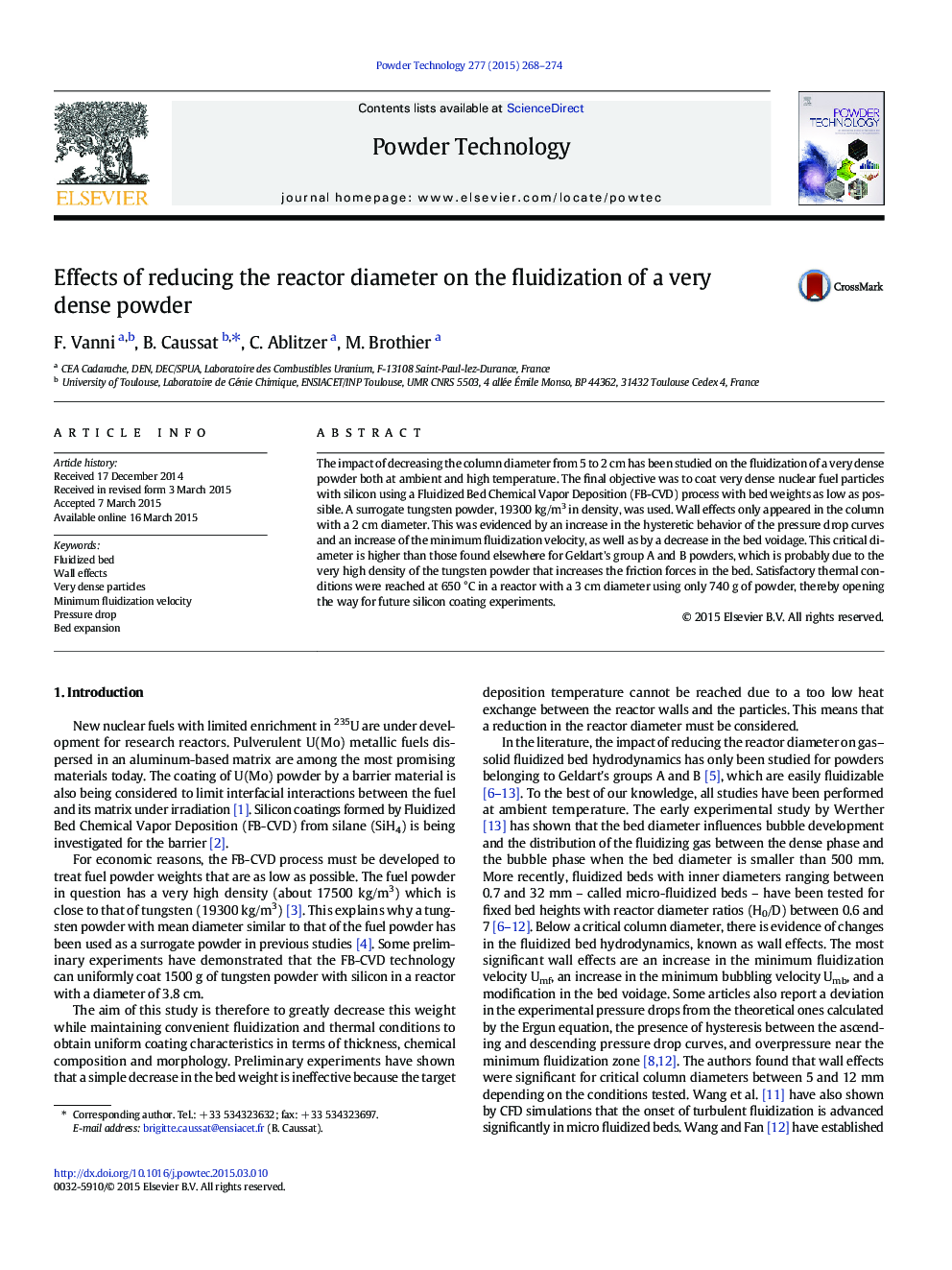| Article ID | Journal | Published Year | Pages | File Type |
|---|---|---|---|---|
| 235778 | Powder Technology | 2015 | 7 Pages |
•Glass and steel columns of 5, 3 and 2 cm in diameter are tested.•Wall effects only appear in the columns of 2 cm in diameter.•They consist in an increase of Umf and in a decrease of bed expansion.•Wall effects are enhanced by the high density of the powder.•At 650 °C, a reduction of the reactor diameter increases the bed thermal gradient.
The impact of decreasing the column diameter from 5 to 2 cm has been studied on the fluidization of a very dense powder both at ambient and high temperature. The final objective was to coat very dense nuclear fuel particles with silicon using a Fluidized Bed Chemical Vapor Deposition (FB-CVD) process with bed weights as low as possible. A surrogate tungsten powder, 19300 kg/m3 in density, was used. Wall effects only appeared in the column with a 2 cm diameter. This was evidenced by an increase in the hysteretic behavior of the pressure drop curves and an increase of the minimum fluidization velocity, as well as by a decrease in the bed voidage. This critical diameter is higher than those found elsewhere for Geldart's group A and B powders, which is probably due to the very high density of the tungsten powder that increases the friction forces in the bed. Satisfactory thermal conditions were reached at 650 °C in a reactor with a 3 cm diameter using only 740 g of powder, thereby opening the way for future silicon coating experiments.
Graphical abstractFigure optionsDownload full-size imageDownload as PowerPoint slide
